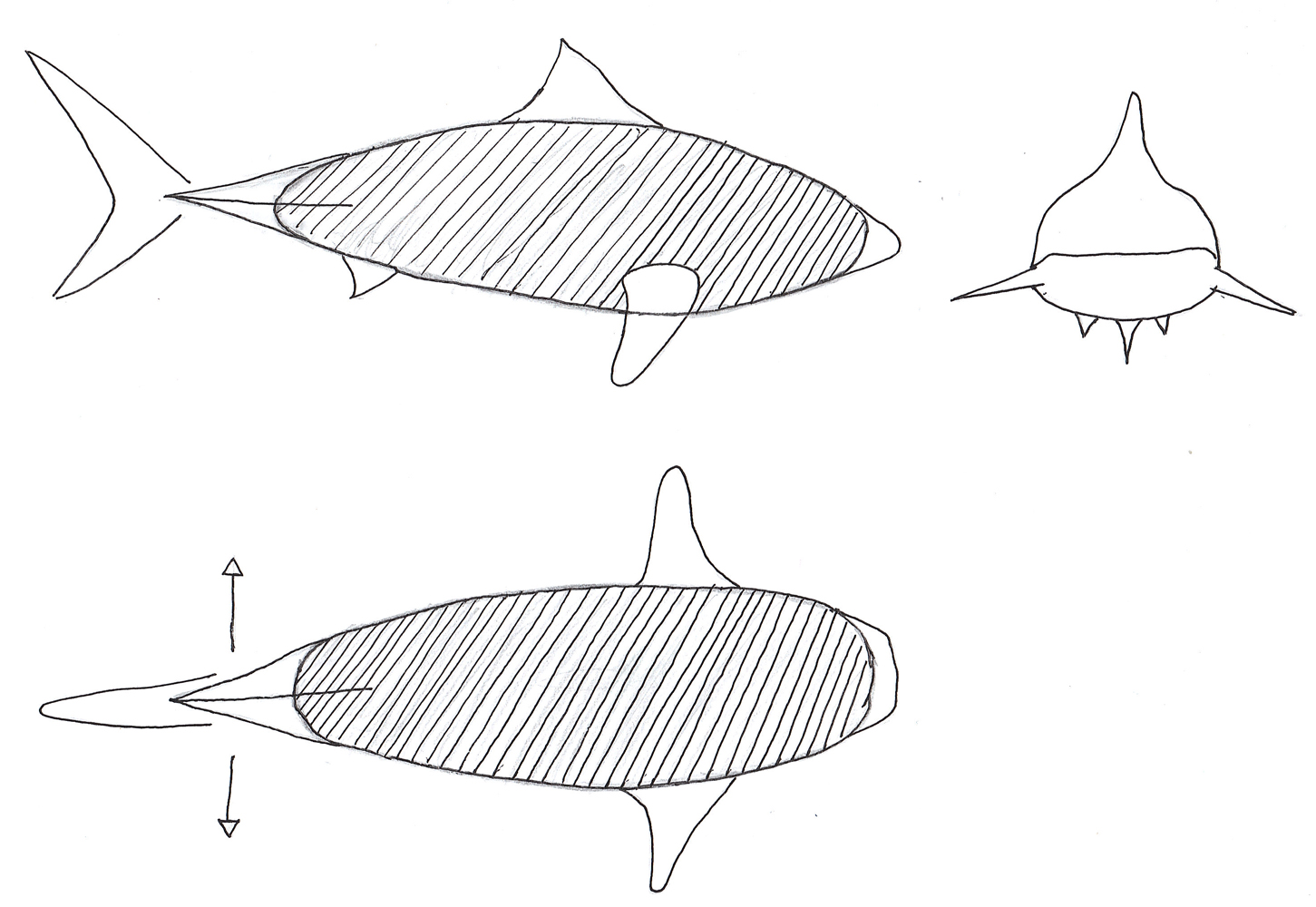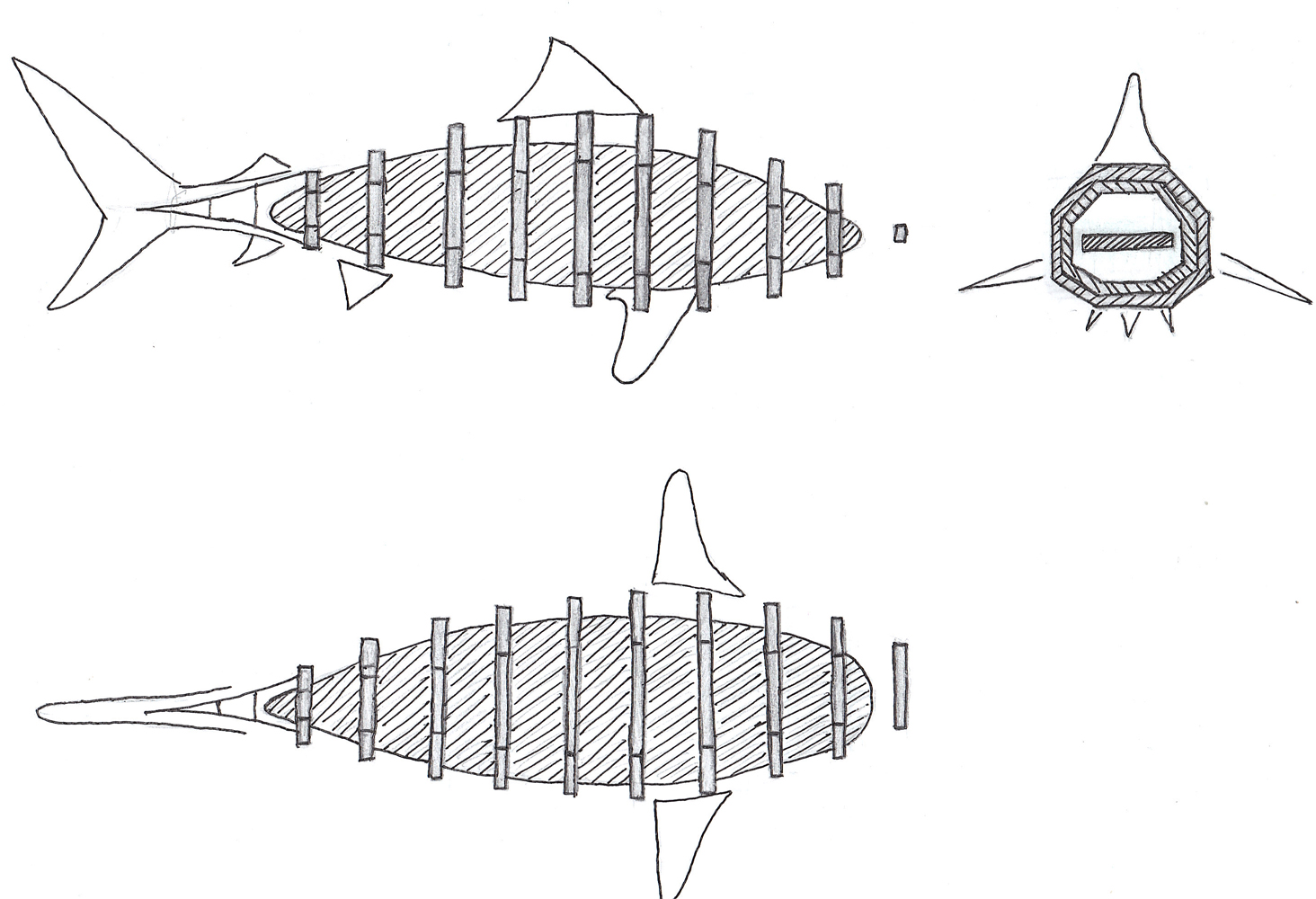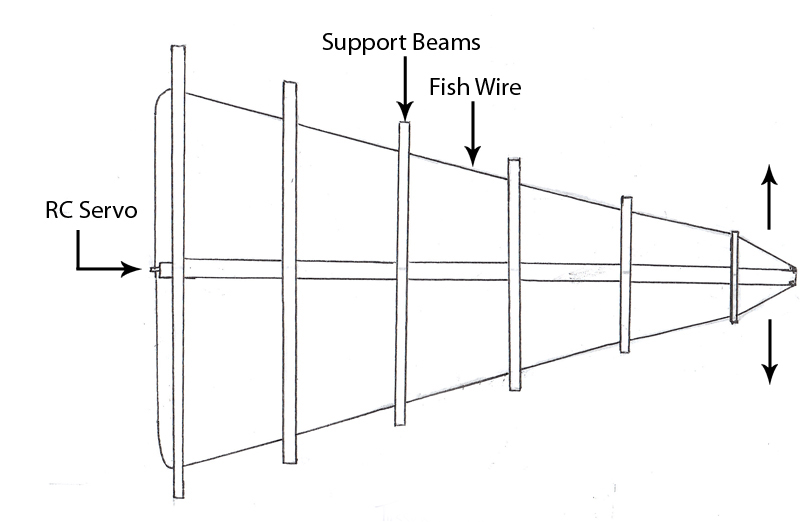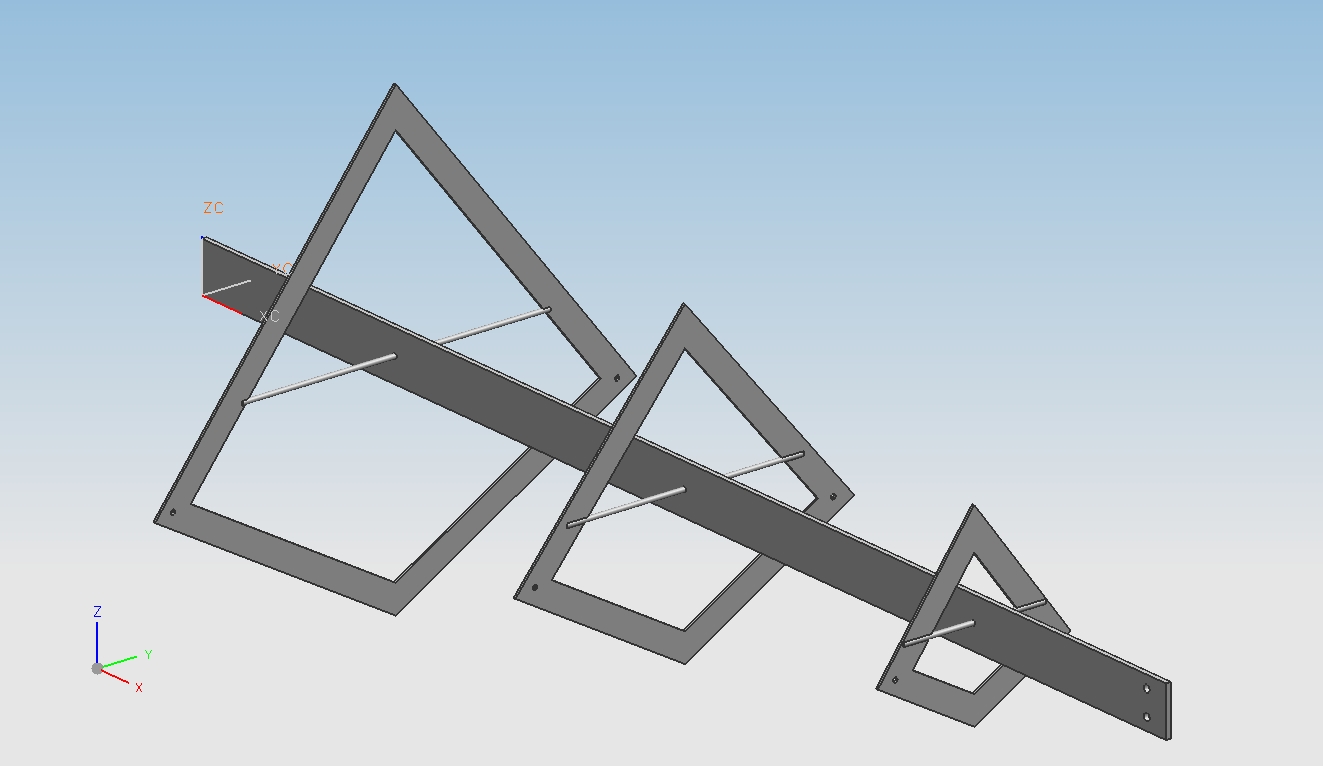RoboShark
Project by Twan Haazen
Supervisor Rob Janssen
This wiki will contain information about my Bachelor Final Project.
Introduction
Lorem ipsum dolor sit amet, consectetur adipiscing elit. Sed vestibulum convallis justo, at vulputate risus vulputate et. Fusce non velit vitae quam dapibus ullamcorper. Lorem ipsum dolor sit amet, consectetur adipiscing elit. Integer tincidunt rhoncus massa, ac fermentum risus sollicitudin vitae. Nulla vitae orci sit amet erat feugiat malesuada a a leo. Vestibulum sem ligula, aliquet eu blandit eget, gravida vel eros. Maecenas pharetra congue massa at sodales. Aenean condimentum, tellus id sagittis malesuada, nibh nunc feugiat orci, dictum consectetur lacus neque sit amet sapien. Class aptent taciti sociosqu ad litora torquent per conubia nostra, per inceptos himenaeos. Morbi adipiscing arcu ullamcorper purus commodo ac elementum augue hendrerit. Pellentesque volutpat enim sed tortor consequat in iaculis ante pharetra. Cras tristique semper urna, id bibendum sapien lobortis id. Donec nisi eros, mattis sed fermentum sit amet, accumsan a libero. Sed sapien mauris, varius a placerat eget, ultricies at ligula. Mauris dignissim ornare pulvinar. Nulla facilisi. Cras nec interdum est. Integer quis accumsan sapien. Quisque vehicula, metus id accumsan fringilla, mauris mauris adipiscing nisi, eget molestie velit mi et lorem. Maecenas augue massa, pulvinar sed adipiscing at, posuere eget dolor. Nam ligula odio, ultricies sit amet mollis sit amet, gravida at erat. Donec pellentesque, nisl at rutrum posuere, nibh urna tincidunt turpis, imperdiet gravida massa nisl nec nunc. Ut in felis ut quam posuere mattis. Nam quis tortor quis arcu scelerisque tincidunt. Vivamus non euismod purus.
Pre-Design Research
In this section two things are discussed. First the most important parts of brainstorm sessions are pointed out. Some basic design problems are stated and taken into account. The second part is about helium. Because the balloon of the shark will be filled with helium, it is important to know what amount of weight the helium can actually lift. The mathematical derivation is discussed and the relation between weight and amount of helium needed is stated.
Brainstorm Sessions
After the decision was made to base the design on a shark, the actual brainstorm sessions began. The most important parts of the these brainstorm session will be discussed here.
The first thing that came to mind, was to search for as much information as possible about projects that did about the same as I was planning to do. When discussing the assignment, the german company Festo had some interesting video's and projects about helium filled balloons. Festo developed the Air Penguin as well as the Air Ray. The Air Penguin is an autonomously flying penguin that communicates with other penguins in the air. The Air Penguin makes sure it does not hit any walls or obstacles and does this by using ultrasound to pinpoint its location. The Air Ray is a remote controlled helium filled balloon which simulates the flying mechanism of a manta ray. Both these projects are closely related to the product I would like to produce. By exploring the website of Festo and contacting the people that worked on these projects, I tried to get as much information as possible to get a clear vision on how to design my shark.

One of the first things that can be concluded from of both of these projects is that the construction has to be very light. The Air Penguin, with a length of 4 meters and a maximum diameter of 80 centimeters, had a total weight of only 1 kg. This requires well use of construction material and space.
After studying the designs of Festo, the first sketch of the prototype is drawn. The first idea consisted of a large balloon filled with helium, produced in the shape of a shark's body. Onto this large sack the several components of the shark are attached. The tail section is made out of several thin rods which will be moved in horizontal direction by a servo. This part will function as the propulsion of the shark. With the side fins the shark can turn and move up and down. The fins can be rotated and the tips can be moved op and down to make steering possible. Their functionality is about the same as the wings of a bird, but then without the flapping. Next to that the top fin can also be used to enhance the steering procedure. The fin can be rotated around it's vertical axle and therefore produce more drag at a certain angle, resulting the shark to move into a certain direction. The first sketch is shown in figure (X).

The second sketch the design has changed. To make the structure more rigid and define the shape better a frame is added. The tail section will also consist of a frame section instead of only 4 single rods as in the previous design. The propulsion is still the same, with the tail section move in horizontal direction using a servo. The steering in this second section can be done in two ways, but the method to do it with still has to be chosen. One option is using the same steering mechanism as used in the first sketch, so by using the side fins. The second method is deforming the balloon using the frame. Thin wire are run through holes in the frame section from beginning to end. By pulling on these wire, the body will deform and the nose will bend in the direction it wants to move. Due to the airflow alongside of the shark, a resulting force will push the shark it's body in the right direction. The second sketch is shown in figure (X). There is a problem with this sketch, the weight of the total frame construction might be to heavy for the helium filled balloon to keep the shark neutrally buoyant.
Using the ideas of the brainstorms sessions, the several parts of the shark can now be designed using both paper as well as a 3D CAD-design. But first needs to be determined how much weights helium can lift.
Helium
The shark will float through the air by using helium. To determine how much helium is needed to make the shark neutrally buoyant Archimedes’ principle is used. This principle states that any object, wholly or partially immersed in a fluid, is buoyed up by a force equal to the weight of the fluid displaced by the object. In the following section a relationship between the mass of the shark and the volume of the balloon needed is derived. Following Archimedes' principle, the upward lift is defined in equation (1).
The whole shark will have a certain weight on which a gravitational force is applied. The total amount of gravitational force is given in equation (2).
To make the shark neutrally buoyant the force from the upward lift has to be equal to the force applied by gravity, which is displayed in equation (3). If the upward lift equals the gravitational force, no net force in vertical direction will be present.
Substituting the terms from equation (1) and (2) in to equation (3), a relation between the mass of the shark and the amount of helium needed can be derived. This relation is given in equation (5).
[math]\displaystyle{ \rho_{air} \cdot g \cdot V = (M_{shark} + \rho_{helium} \cdot V) \cdot g \qquad (4) }[/math]
[math]\displaystyle{ M_{shark} = (\rho_{air} - \rho_{helium} ) \cdot V \qquad (5) }[/math]
In equation (6) M is the molar mass, P is the pressure, R is the universal gas constant, and T is the absolute temperature. If the assumption is made that the temperature is equal to 293K and the pressure is 1 bar, the density of air is, according to equation (6), equal to 1,204 kg per cubic meter. At the same conditions the density of helium is 0,1787 kg per cubic meter. Using these values for the densities of air and helium, 1 cubic meter of helium can make 1 kg neutrally buoyant. Using equation (5), the size of the balloon needed to make the shark neutrally buoyant can be determined.
Design

In this section the different design stages will be discussed. First the tale section is explained. The working mechanism and sketches are shown. After the tail section, the main body part is pointed out. Different kinds of design are discussed and the the sketches and visualizations are shown.
Tale Section Design
The first part of the shark that is designed, is the tail section of the shark. This part will function as the propulsion of the fish. In figure (X) the sketch of the rear section is shown. At the right side of the sketch the tail fin will be attached, and the left part of the sketch will be attached to the body of the shark. By studying the swimming of a shark, the part that actually moves of the shark's tale is the part between the tail fin and the body section. This part makes a horizontal translation by moving sideways. To model this into my prototype, a flexible rod in the center will be used as the backbone of the tail section. On this flexible rod several support beams are mounted to define the shape of the tail section and to guide the fish rod that is used. The fish rod is used to obtain the needed deformation of the center flexible rod.

The fish rod is connected to the tip of the center flexible rod and is run through the support beams to the RC servo that is mounted at the start of the flexible rod. If pulled on one end of the fish rod, the flexible rod will deform in such a way that it will bend in the direction of the side where the force is applied. If the force is applied first on one side and, after the desired deformation is acquired, on the other side and this is repeated every time. The rod will bend first to one side and afterwards to the other side. This results in the desired horizontal translation that is needed for the proper propulsion of the shark.
Next to a sketch of this idea, a 3D CAD-design has also been made. This design is show in figure (X). In this design only three rods are used, this will give enough shape definition throughout the length of the tail section. Using only three section will also make sure the design stays light weighted. Adding more support beams will add a lot of mass to the shark. The 3D CAD-design will be used to make the prototype of this section.
Body Section Design
Body Section Design
Prototypes
Tail Section Prototype
After the designing phase, a prototype has been build. The flexible rod is a part of flexible plastic and the in between parts are made out of MDF. Small holes have been drilled into these parts to allow the fish wire to run through it. When applying force into these wires the tale of the shark bends as required. This is shown in the figures below.